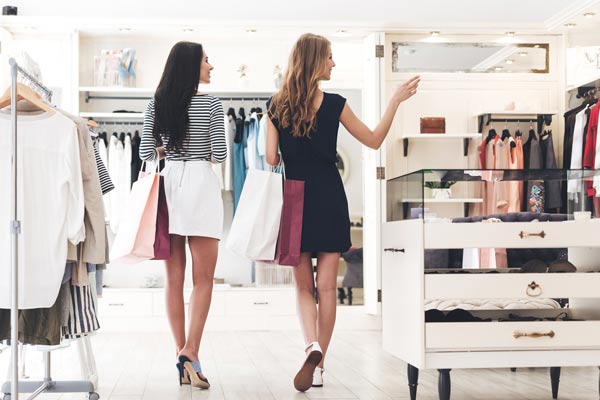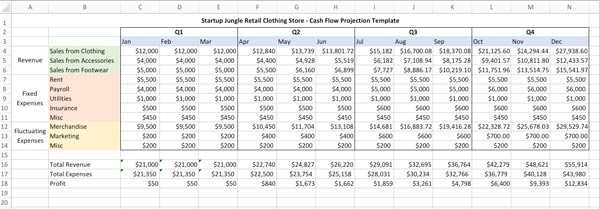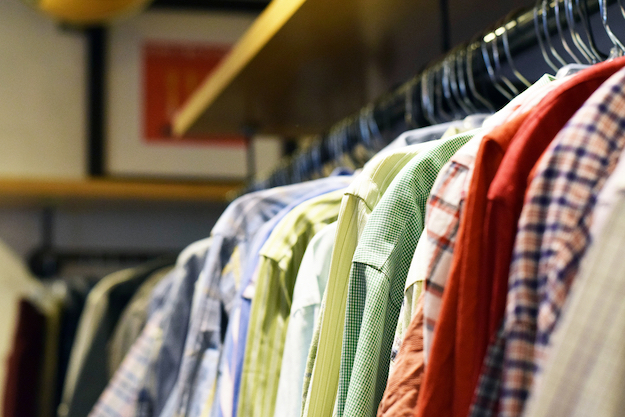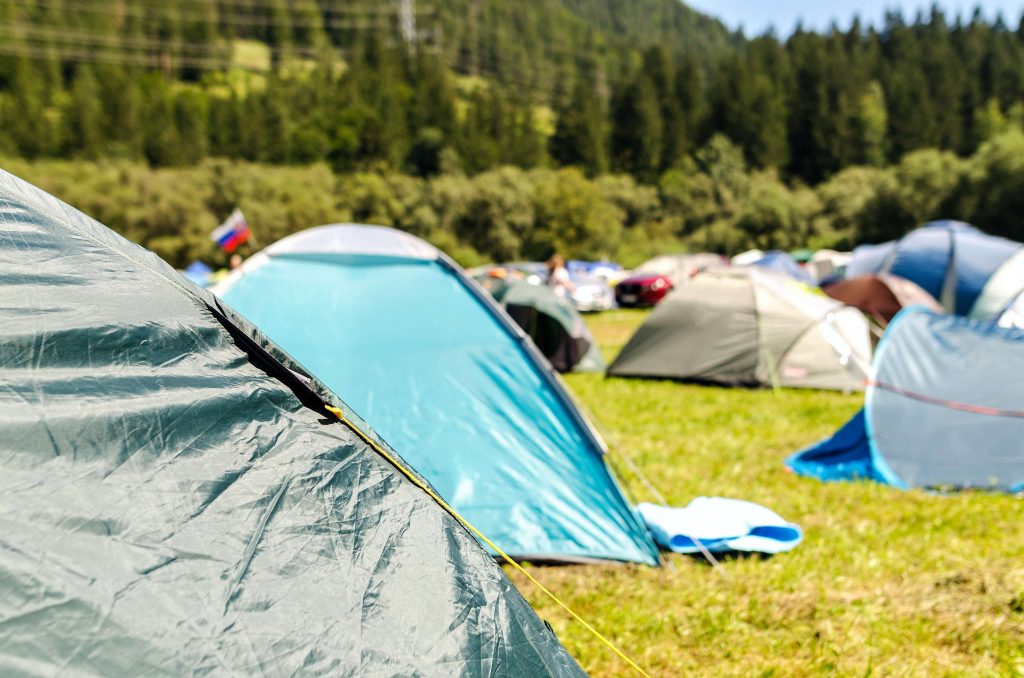The top retail clothing businesses had to start somewhere. The Cinderella story of the Forever 21 business plan, starting as a single Korean immigrant mom and pop store, morphed into a 8 billion dollar retail and online women’s fashion clothing store. There are countless retail and online clothing stores. We’re here to break down the steps of how to open your own retail clothing business.
There’s a saying I’ve always absolutely adored.
“There’s no accounting for taste.”
I use it constantly. Mostly whenever I meet my son’s newest girlfriend. But when I was a little girl, I heard that a lot. It was aimed at me. My fashion choices were, let’s just say, a little ahead of my time.

How to Start a Retail Clothing Business
I grew up in the midwest. Things there were pretty boring there in the 80s. And not just the nightlife, but the people too. When I was a teenager, I really bought into the fashion scene of the time.
I was obsessed with the neons and the big hair of the 80s.
Unfortunately, I was pretty much the only girl in my high school to feel that way. Everyone else kept with the dull monotones of the midwest, leaving me dreaming about the big lights of New York City and Paris, the fashion meccas of the world.
As soon as I graduated high school, I took the big leap and hopped on a bus to NYC to become a star in the fashion world.
I had it all planned out! I was going to intern for Sassoon or Gloria Vanderbilt or Jordache, fly through the ranks, and become a major fashion designer.
Spoiler alert: that never happened. Instead, I ended up as a waitress at some greasy diner going to community college at night to get my degree. Livin’ the NYC Dream…pretty sexy, right?
I earned my degree and ended up getting a job at a high-end women’s boutique in Manhattan. I spent an amazing two years there before my wonderful boss Elizabeth sold the store and we had to leave. Working in the store showed me a glimpse of what I dreamed about when I was a young girl.
Maybe being a fashion designer wasn’t in my future, but I decided I could still influence fashion by having my own boutique. Elizabeth, being the amazing friend and mentor that she was, invested in me, and a year and a half later, we launched our own retail clothing store.
I want to share with you my mistakes, my pitfalls, so you can avoid them.
I want to share with you our wins, and our successes so you know how much it’s worth it. What I’m about to share with you won’t guarantee success, but it will save you a lot of grief and headaches if you decide you do want to pursue your dreams of owning your own store.
Just remember, while you may have the most beautiful, stylish offerings in the area, well there’s no accounting for taste. So let’s get started on learning about how to start a retail clothing business for you!
Step 1: Learn How a Retail Clothing Business Works

The U.S. fashion industry is a $225 billion a year industry.
Americans love to shop, and always insist on staying up on the latest fashion trends. But if you want any of them to shop with you, first make sure your business is reputable and trustworthy.
A love of fashion isn’t enough to justify opening your own store.
Before you even think of having your own boutique, you absolutely need to go work for someone else’s. In the five years I spent working in retail, I lived and breathed fashion. But what’s more, I lived and breathed the business.
If you’re serious about starting your own clothing store, you’ll want to observe, dig through, and learn everything about the following:
- Clothing vendor sourcing and catalogs
- Stay up to date on fashion trends, and trade shows
- Inventory fulfillment, storing, shipments
- Expenses of running a clothing store
- Employee scheduling and POS system
- Hiring sales associates and assistants
- Employee policies and procedures
- Store systems, and standard quality
- Cost of goods and profit margin
- Sales commissions (if any, high-end stores typically pay commission per sale)
- Store’s competitive advantages- what are they?
- The disadvantages – what’s not working, and why?
- The problems, how they’re dealt with, and avoided in the future
- Marketing, what kinds of marketing tactics are used and effective (and equally as important: ineffective)
Some of this will be easily accessible, others (like the product sources) will be more difficult to acquire unless you rise in the ranks as a manager. But that’s the best way to:
- Figure out if this business is right for you
- Decide if you want to take the plunge and open your own clothing store
While you’re learning the business, create your master retail clothing store business plan.
You might want to read up on the Forever 21 Cinderella story I mentioned. Also, there’s a student who did her research topic on the Forever 21 Business Plan.
Step 2: Create a Business Plan for your Clothing Store

What’s the most common reason new retail clothing businesses fail?
Lack of a written retail clothing store business plan.
Any business will fail without a plan. It’s the foundation. Which is exactly why you have to figure out your plan.
Here are some of the questions you’ll need to answer in your business plan (in no particular order):
- What brands will I carry?
- Where will I get them?
- Who will I sell them to?
- Where will I find my customers?
- What are my profit margins?
- What’s my cost of goods per item?
- What are my specials?
- How much inventory do I need to have on hand?
- How many employees do I need?
- Where will I find them?
- How should I train them?
- In what way is my store different from my competitor’s store?
- How will I promote my store?
- What are my store policies?
- Do I want to offer returns or just exchanges?
By no means is this list all-inclusive. There are always more questions to ask. So always be modifying your plan and looking ahead at 30, 60, 90, and 180-day goals. By always evaluating and measuring my goals, I’m able to gauge if my stores are where I want them to be.
The folks here at Startup Jungle, we can help you create an expertly organized and professionally presented business plan for your startup retail clothing store. Just email bplan@startupjungle.com, and they’ll give you the help you need.
Step 3: Discover Earning Potential

The range of clothing stores is vast as so is the paycheck. The median retail clothing store owner is around $51,000 per year. However, the range starts from $24,000 ~ $150,000.
Your earnings potential depends on not just your sales, but your margins.
There are four ways to increase your revenue:
- Increase your costs
- Increase the number of customers you serve
- Keep your customers coming back
- Increase the average size of their order
- Increase the transaction values per sale
Now, these strategies all increase revenue, but revenue is only part of the equation. You must subtract your costs from your revenue to determine your profits.
To do this accurately, you must know all your costs, including:
- Rent
- Utilities
- Insurance
- Payroll
- Cost per item
Eventually, you’ll be able to analyze sales reports to see which products are selling well and which products aren’t. That information can help you adjust margins to reduce stale inventory in order to bring in more of what is selling at higher margins.
You must track everything to discover your earnings potential. Here’s a great article on how to price your retail items, and all the considerations that you should have in place.
Step 4: Set a Budget

A complete retail budget should balance and coordinate the incoming revenue earned, between 2 main parts of your business:
- Inventory and merchandise payments
- Costs, Expenses, and overhead (such as taxes, rent, and payroll)
Here’s how to budget for your retail clothing store:
Organize your Cash Flow Projections
Using excel or google sheets, label the columns by the year, like such:

Next, start categorizing your revenue sources for the rows. For this example we have:
- Revenue Sources
- Clothing Sales
- Accessories Sales
- Footwear Sales
Then, add two more categories: Fixed expenses (expenses that stay the same) and fluctuating expenses (such as merchandise costs of goods and marketing campaigns). For this example, we used:
- Fixed Expenses:
- Rent
- Utilities
- Payroll
- Insurance
- Fluctuating Expenses:
After that, it’s time to start filling in the blanks. In this example below, I assumed the cost of goods and some general numbers in the expenses.
Now, it’s time to start putting in some projections.
In the very beginning of your startup, this will serve as a goal sheet. It’s important to track these things monthly in the actuals and compare it against the goals so you know where you’re falling short.
Here’s my example here at Startup Jungle:

Notice a few assumptions that you should take into account when you’re filling out your own projection sheet:
- Assuming that this business opens in January, I kept revenue numbers pretty conservative.
- Q2 I have a set growth goal of 7% for the quarter
- Q3 I have set a growth goal of 10% for the quarter
- Q4 I have set a growth goal of 15% for the quarter
- Q1 is coincidentally the slowest months in retail, as it follows the very vigorous spending months of Q3 and Q4.
- Summer time is a hit or miss with retail clothing and is very specific to the type of clothing you’re selling to and who the audience is
- Assume that as your business grows in revenue, it will naturally grow in expenses: more employees needed, more merchandise, etc.
- If your merchandise has additional categories like sweaters, jeans, tops, etc, I would consider adding them to the revenue rows so you can see where the sales are growing most and falling short.
If you start to see deficits in your profit, this cash flow worksheet will give you a sense of where you’re not meeting the goals, and what area of the business you’re falling short.

I recommend reading books on setting a budget for a business.
A couple of my favorites are:
The Ultimate Guide to Creating a Business Budget: Learn the Tips and Tricks to Creating a Business Budget that Explodes Your Business
and
Financial Intelligence: A Manager’s Guide to Knowing What the Numbers Really Mean
Knowledge is key.
So read as much as you can about anything you don’t understand in order to keep costs down however you can without sacrificing service and stick to your budget!
Step 5: Decide Which Products to Offer
This part should be fun for you! Here’s where you get to decide your image.
- What type of store are you?
- Perhaps you’re a custom tailor?
- Or a high-end boutique like yours truly?
If you’re just looking to get into retail, you can always explore a lower end retail store like Abercrombie. But you must know your identity. Pick a signature look and select your brands and pieces to adhere to that. This is great tip folks:
Shop in looks. It’s about increasing the transaction volume per sale.
The way I always tell people when I’m speaking to groups is to pick a magazine, or even two, to represent your business.
Are you a Women’s Health kind of store stocked with yoga and athletic apparel?
Or perhaps Vogue? High-end and fashionable.
Maybe you’re going buying for trendsetters and hipsters in Seventeen?
This also means your employees should represent that image, as well. So don’t just pick your favorite magazine, but talk it over with your team and see what they think best represents you. Outside eyes are always helpful.
Eventually, this won’t be a guessing game.
The sales reports you’ll utilize for your budget will help you monitor what styles, colors, and pieces sell best, and which ones you should stop carrying.
In addition to the merchandise, you’ll need the store displays and supplies.
Here’s a list of those needs:
- POS system or cash register
- Price gun
- Shopping bags for customers
- Display cases and shelving
- Clothing racks on wheels
- Mirrors. Lots of mirrors
- Benches/seating for fitting rooms
- Mannequins
- Specialty Displays for accessories (like necklace holders)
- Gift wrapping supplies
- Receipt/printer paper
- Shopping baskets
- Store banners
- Crowd control posts for easy line forming
- Cleaning supplies
- Website
- Social media presence
- Security System
Try and remember that the store is not just about you, but about your customers. Just because you love a certain style doesn’t mean they will. So ask them what they love and don’t love, pay attention to your reports, and don’t take offense if your choices aren’t their choices.
Next on the docket, is the match the store design with your product style.
Perhaps you’re going for the Parisian boutique style?
Or perhaps your clothing is more soft, beachy, and quaint?
High fashion clothing deserves high fashion design.
Maybe your clothes are fun and funky…
Whatever your style, make sure its cohesive, budget friendly, and fabulous.
Step 6: Decide on a Location
Now, this one should be done at the beginning, but I put this step here because I want you to already understand a lot of the ideas that go into this.
Budget matters when selecting a location. You can’t take a 10,000 sq ft store with a 1,000 sq ft store budget.
Earning potential factors in, too. A nicer neighborhood will allow for higher prices and margins, whereas budget areas require budget prices, leaving little room for profit margins. In this environment, you would need to overcome margins by producing large amounts of sales.
Look for a blend of rent cost and earnings potential, in an area you’re fond of.
Remember that your employees should be excited to come to work, and being in a hip, cool area helps that.
Select a location based on your plan.
Some things you should consider other than rent when selecting a location are:
- Parking
- Lighting (both outside and in. I adore the huge windows in my stores which allow for lots of natural light)
- Foot traffic
- Visibility (Can people see your store from the street or is it hidden?)
As a retailer, you have so many options. You can rent space in a mall, guaranteeing foot traffic but also raising the cost of rent and adding mall rules your store must follow.
You can join a shopping plaza. Less foot traffic here, but plenty of parking and lots of overall traffic from other retailers.
You can also find a beautiful storefront in your local downtown district, but again notice the relation between rent and foot traffic.
I was visiting Seattle, WA recently and even saw houses converted into stores!
Opening your own boutique is hard work, so make it a little easier by picking a great location
Step 7: Find Suppliers

Now that you know what style of clothing you are, I encourage you to shop around.and look at different suppliers and different brands.
One of my favorite sites for comparing merchandise and finding suppliers is Wholesale Clothing Distributors.
Also, think about what region of the country you’re in. Different distributors have different abilities to cater to different states.
The truth is that there are probably hundreds of vendors you can choose from and you need to dig and do some research to find all of these.
But the truth is that if you want to get really serious about becoming a boutique owner you must visit fashion trade show events like Magic Show, Offprice Show and, one of my favorites, the ASD show.
You can browse fashion shows at UBMFahion.
Once you’ve got your merchandise set, think a bit about your decor.
Remember, you want to represent your image, so some couches and quality mirrors, perhaps?
Maybe even a nice refrigerator or water dispenser for your clients, so that they can enjoy a cold beverage.
Identify your image, then find the proper suppliers for everything you need to match that image.
Step 8: Promote Your New Store

Regardless of how amazing your boutique is, you can not survive without customers.
Never forget that.
So come up with a plan to bring customers in. And for that, first, you have to figure out who your customer is.
How old is your market? What is their average income? What do they enjoy doing?
The more you know, the easier it is to communicate.
For example, if your new store is a women’s sporting apparel boutique, you may want to go hand out flyers at a women’s gym.
If your market is young and tech savvy, Facebook ads work great.
Definitely be on Yelp, as well.
Do anything you can to spread the word. Reach out to bloggers, Yelpers, and newspapers to raise awareness about your presence. Hand out flyers wherever you can and be ready to jump to meet people wherever you can.
Finally, get involved in meetups and organizations locally. They’re great opportunities to network and spread the word about your amazing store they just have to see to believe.
Step 9: Create a Staffing Plan
You can not do everything yourself.
Believe me, I tried.
In my mind, I was saving money.
But the truth is business suffered since I could not maintain the high level of service I envisioned. Instead of saving money, I not only lost money, but I lost sleep, too.
Employees are critical to the success of any business. But that’s a double-edged sword because employees are also expensive. Labor will always be your highest recurring cost, so it’s important for you as a business owner to keep labor as low as you can while at the same time maintaining a high level of service.
Have a plan for both hiring and scheduling employees to ensure your business runs smoothly.
If you consistently schedule too many employees, then chances are you’re not utilizing them properly. On the other hand, if you under staff, your employees may get frazzled and feel overwhelmed by how much there is to get done.
You’ll come to understand the needs of a boutique, but always treat your employees well and try not to over (or under) work them.
Remember that it’s their job but it’s your business, so you set the rules and they’ll fall in line. Staff as you need, not as they want, and help your business extend every dollar.
It’s equally important to check in with your staff on a monthly basis to talk about recurring problems and inefficiencies. Take them out to lunch and give them a place to voice those concerns.
Step 10: Get Into the Boutique Owners Community
The boutique community is a fun group.
Visit shows around the country and make friends and connections wherever you can.
Look for local events which you can attend to meet other boutique owners and fashion aficionados.
Additionally, check out meetup.com for local industry get-togethers in which you may be interested.
Unfortunately, you’re going to get a lot of solicitations from communities and chambers of commerce. Do your due diligence prior to joining, so you know if it’s worth your money and time.
You never know when (or where) you may find the missing piece to your store’s success, so be active and engaged in the fashion scene, not only in your area but all over.
Here’s a great infographic about the retail clothing business!

The Bottom Line
Bottom line: Opening (and running) a retail clothing store is a lot of work.
But if you do it right, it’s not only rewarding, it’s a lot of fun.
I love being my own boss and I love having a business which influences so many people’s everyday lives.
Hopefully, you put this guide to use. If this was helpful for you and you want to learn more about starting a boutique, StartupJungle.com has a 21 point checklist for starting your new business. Make sure you download this if you’re serious about getting started.













